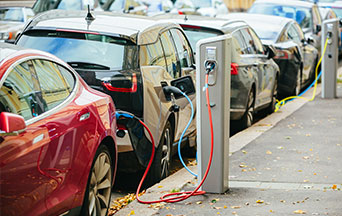
Consulting firm McKinsey & Co. conducted a poll that revealed a surprising trend among American millennial electric vehicle (EV) owners. It found that a significant 57 percent are considering reverting to gasoline-powered cars.
The primary reasons cited for the change include range anxiety, home charging challenges, difficulties while on the road and the overall high cost of ownership.
Eternal and Natural Law: The Foundation of Morals and Law
Buyer remorse over EV purchases seems more pronounced among those with children than older EV owners. Such considerations raise questions about the thoroughness of young people’s evaluations regarding EV ownership in the first place.
For instance, the average annual insurance premium for an EV is $528 higher than that for a gas-powered car. This difference is due in part to increased repair costs. Surprisingly, escalating electric rates in recent years have raised operation costs significantly. Depending on the region, fueling most gas-powered cars can now be more cost-effective than recharging EVs.
If the Biden Administration had not waged war on oil by canceling the Keystone XL Pipeline, suspending oil and gas leasing on federal lands, delaying permits for energy infrastructure and draining the strategic petroleum reserves, fuel prices would be even lower.
Moreover, installing a home EV charger entails a substantial investment of several thousand dollars. For the many millennials who do not own homes, reliance on commercial charging stations becomes indispensable despite the higher rates and constant challenges in finding stations that have not been vandalized.
The time-consuming nature of full battery charging, often exceeding 10 hours, poses an intolerable inconvenience, especially for young families juggling work demands and everyday responsibilities.
In addition, overcharging above 80 percent capacity accelerates battery degradation. Repeatedly driving an EV battery close to zero range and routinely charging it from low to full can also significantly degrade its lifespan. Continuous charging at Level 3, also known as DC Fast Charging (DCFC), can decrease the battery’s longevity. This is a constant temptation when faced with the option of waiting ten hours.
EVs lose their resale value faster than gas-powered cars due to vulnerable batteries, which are costly to replace. The market surplus caused partly by the war on petroleum has slashed prices by 30 to 39 percent for used EVs, far exceeding the average depreciation of gas-powered cars. Hence, electric powertrains are now seen as drawbacks, reducing EVs’ appeal and worth.
The millennials’ EV problem is compounded by their precarious financial situation. The majority of young Americans struggle to purchase homes and secure employment. The employment rate for 20 to 24-year-olds has significantly dropped post-pandemic, and unemployment among college graduates aged 22 to 27 mirrors the levels seen during the 2008 financial crisis. This unusual trend in youth unemployment, coupled with rising auto and credit card delinquencies among those under 40, resembles the recession of 2008-2009.
 Learn All About the Prophecies of Our Lady of Good Success About Our Times
Learn All About the Prophecies of Our Lady of Good Success About Our Times
Though EVs have appeal in certain applications, younger generations resent spending money they do not have on expensive EVs. They also resent the government’s pressure to force out gas-powered vehicles from the market. Some also question the supposed climate benefits of EVs, which consume massive amounts of carbon-heavy electricity and mining practices.
Much of the low-hanging fruit of the EV market has already been picked. Now, some people don’t like what they received. The immediate future of EV sales among the younger generation does not bode well.
Photo Credit: © scharfsinn86 – stock.adobe.com

